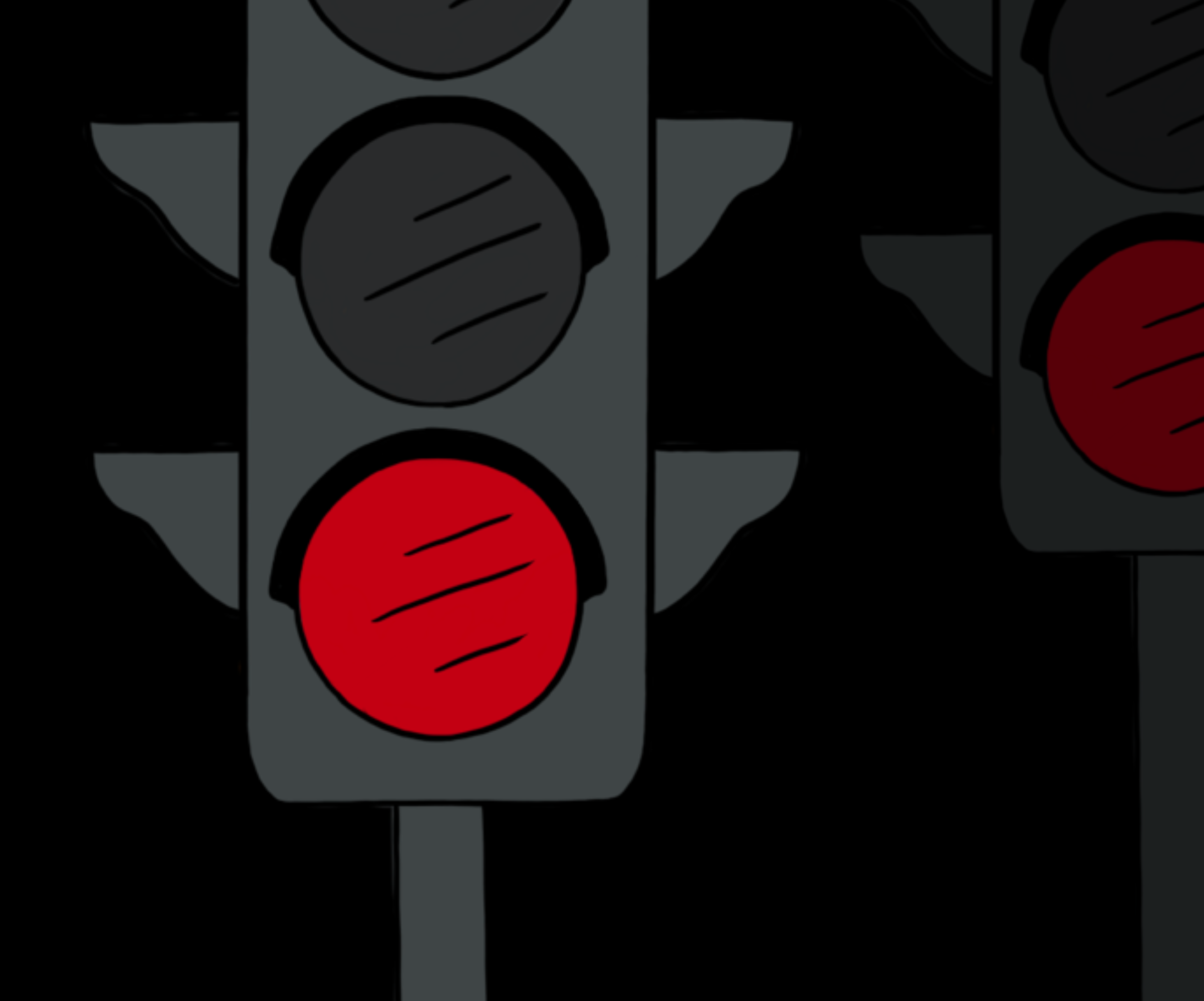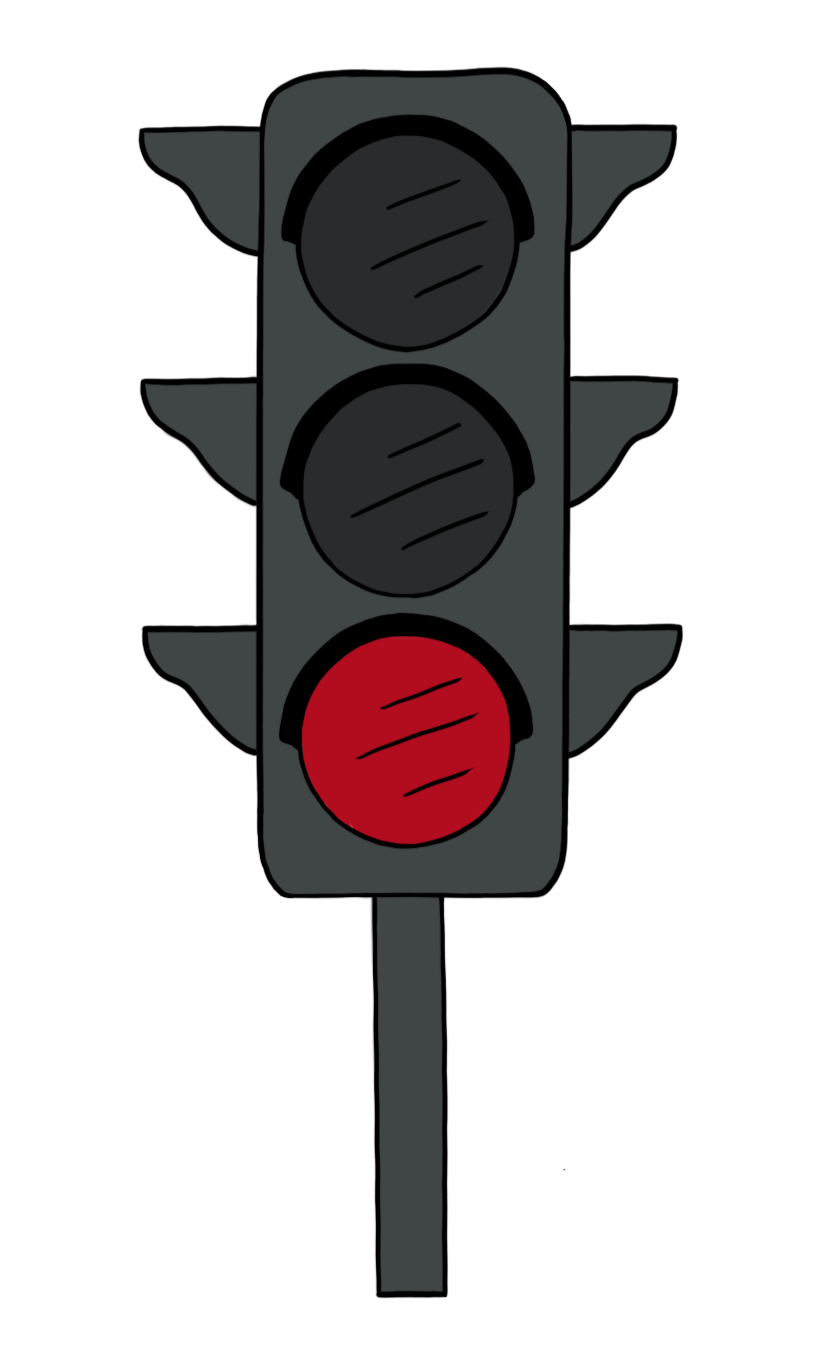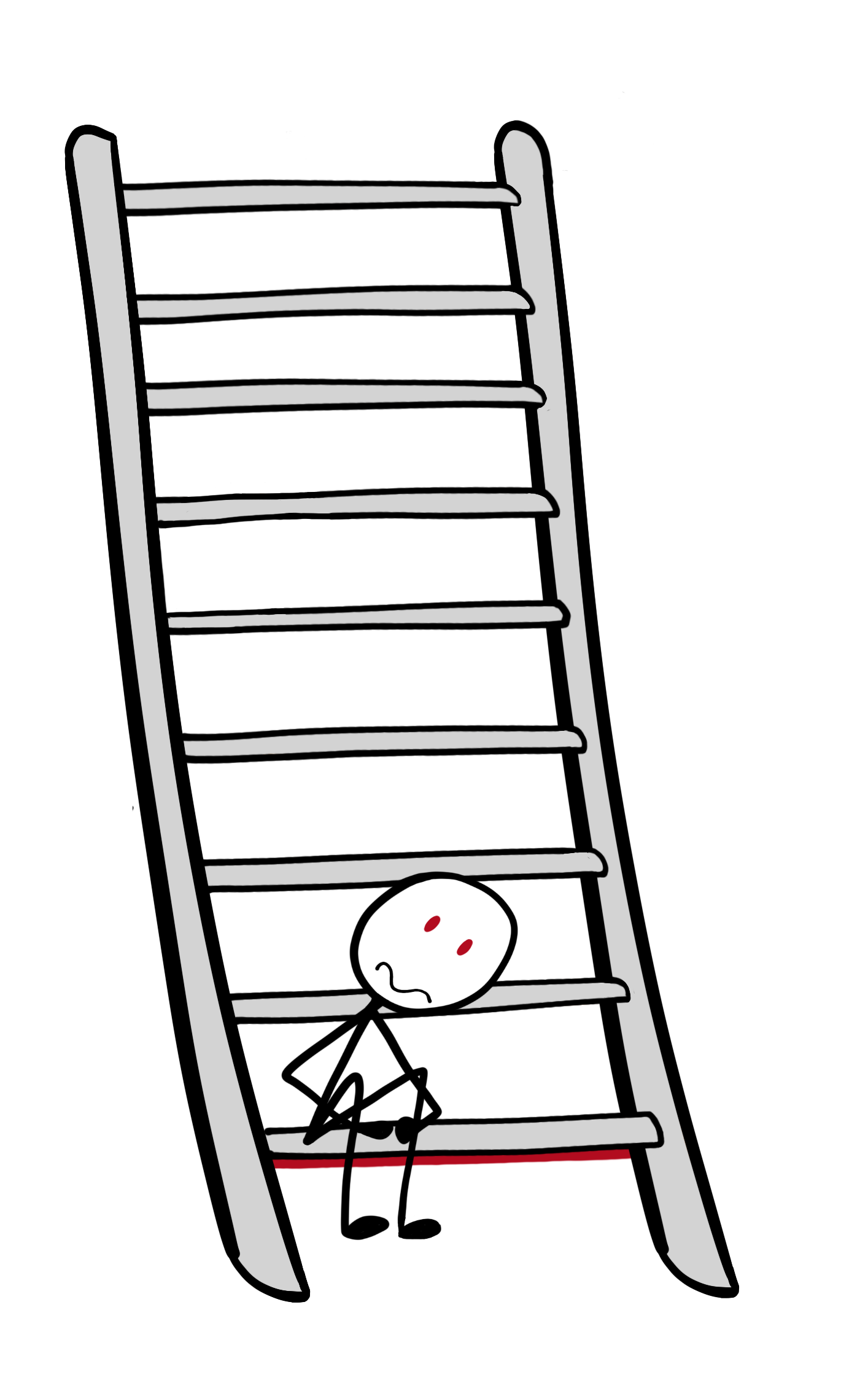
Red Zone: Immobilisation Response
This lesson talks about the “red zone”, or our immobilisation response. We'll talk about how it functions, and how to recognise what this nervous system state might feel like for you.
What is the red zone
As we learnt back in that first lesson, the red zone is our immobilisation response, where we might feel numb, low energy, or depressed.
This is the dorsal vagal activation of the autonomic nervous system, which is responsible for shutting down our metabolism - slowing down our heart rate, our digestion and our visceral organs - and essentially taking our whole system ‘offline’.

Here our nervous system is hypo-aroused - we feel sluggish, our minds are foggy, and we feel disconnected or unable to “switch on”.
Why it does this

In terms of our evolution, this is the oldest part of the nervous system - it evolved in mammals, reptiles, and even fish as a very primitive protective state of collapse. The red zone functions in this way so that if we’re in the presence of something it thinks is life-threatening or inescapable, we can immobilise ourselves in order to feign death, conserve energy or protect ourselves from feeling pain.
Because this state is further down the ladder than the yellow zone, it can sometimes feel really hard to find our way back up to the green zone, and we can find ourselves feeling stuck in this shut down response.
Signs of the red zone
Below is a list of signs and signals of what the red zone can look like in the body and mind. Have a look at the list and notice which ones feel familiar in your life. You might find that only a few apply to you. If reading this list becomes distressing at any point, feel free to skip it.
What it might feel like in the body:
Fatigue or burnout
Muscle aches
Sleeping difficulties
Feeling overwhelmed by most tasks
Loss of interest in activities that usually bring joy
Feeling detached or foggy
Dissociation
Tearfulness
Numbness
Exhaustion
Chronic fatigue
Feeling drained
Insomnia/can't sleep
Can't stop sleeping
Feels hard to talk/move
Flat voice/expressionless face
Reduced appetite
Headaches
Light-headedness
Restlessness
Muscle fatigue
Fibromyalgia
Feels like everything is a dream/isn’t real
Feeling detached from yourself
Feeling spaced out
Difficulty concentrating/can’t think clearly
Difficulty making decisions
Loss of interest in activities that usually bring joy
Low mood/sadness/irritability
Feeling nothing
Thoughts when you’re in the Red zone might sound like:
“I’m worthless”
“No one cares about me”
“I don’t have the motivation”
“I feel like a burden”
“I don’t see the point”
“Everything feels too hard”
“It’s never going to get better”
“I’m not enough”
“I’m a horrible person”
“I’m completely hopeless”
“No one likes being around me”
“I have no energy to talk to anyone”
“Everything feels too hard”
“I don’t know who I am”
Noticing when we get stuck
While this red zone can feel really unpleasant or even hopeless, we don’t want to label it as “bad”. Just like our other nervous system states, it serves a purpose. It forces the body to stop, it numbs pain, and prevents us from feeling too many overwhelming things by ‘tuning out’.
What we need to be aware of, is if we notice ourselves becoming stuck in the red zone when it's not helpful anymore. Even if this state prevents us from feeling pain or intense emotions, the stress or trauma is not actually able to resolve while in the red zone. Just like with the yellow zone, being stuck in a chronic state of hypo-arousal can cause health issues, prevent us from being able to engage with the world or with other people, and can make life seem kind of... lifeless.
Coming out of the red zone

There's another thing that’s important to know about the red zone. Because it’s at the bottom of the ladder, in order to get to the green zone we actually have to go up through the yellow zone to get there.
What this means is that in order to come out of states of depression, dissociation, and shut down, there’s a chance you might begin to instead experience some of the symptoms of the yellow zone, such as anxiety. This can feel scary or wrong if you’re not expecting it, but just remember that it’s a normal and expected part of the healing process, it won't last forever, it can be managed, and you don't have to force anything before you're ready.
Learning to regulate
I really don’t want hearing these symptoms of the yellow and red zone to scare you or make you feel like we have no control over any of this. Because that’s not the truth.
I want to remind you that there is hope in all of this.
Once we understand our own nervous system and how this all works, we can start to figure out how we can be there for ourselves. We can learn to recognise the signs of when we go down to the red zone and we can use that as a signal that reminds us to check in with ourselves, so that we can give ourselves some kindness and find what we need in that moment to gently bring ourselves back up to the green zone, when we're ready.
Being aware of the signs and signals for the red zone and which ones might resonate for you, as well as what the process of returning to the green zone might be like, is an important step towards learning to cultivate this healthy relationship with your nervous system.
Lesson Review
This lesson talked about the basics of what the red zone is and what it might look or feel like for you.
For more information, strategies, and exercises that can help you cope when you find yourself in this zone, check out the red zone section of the 'Cope' course.

